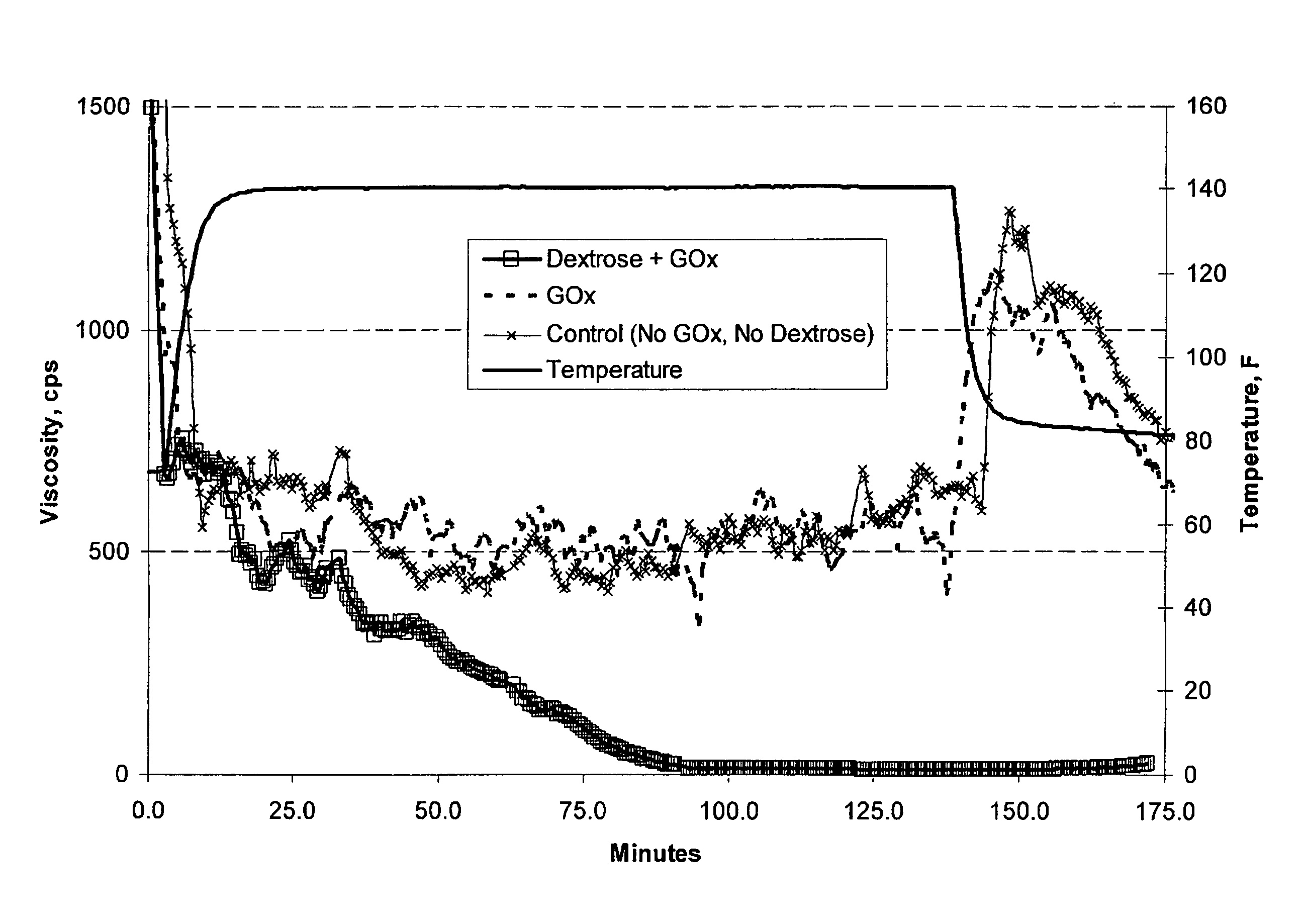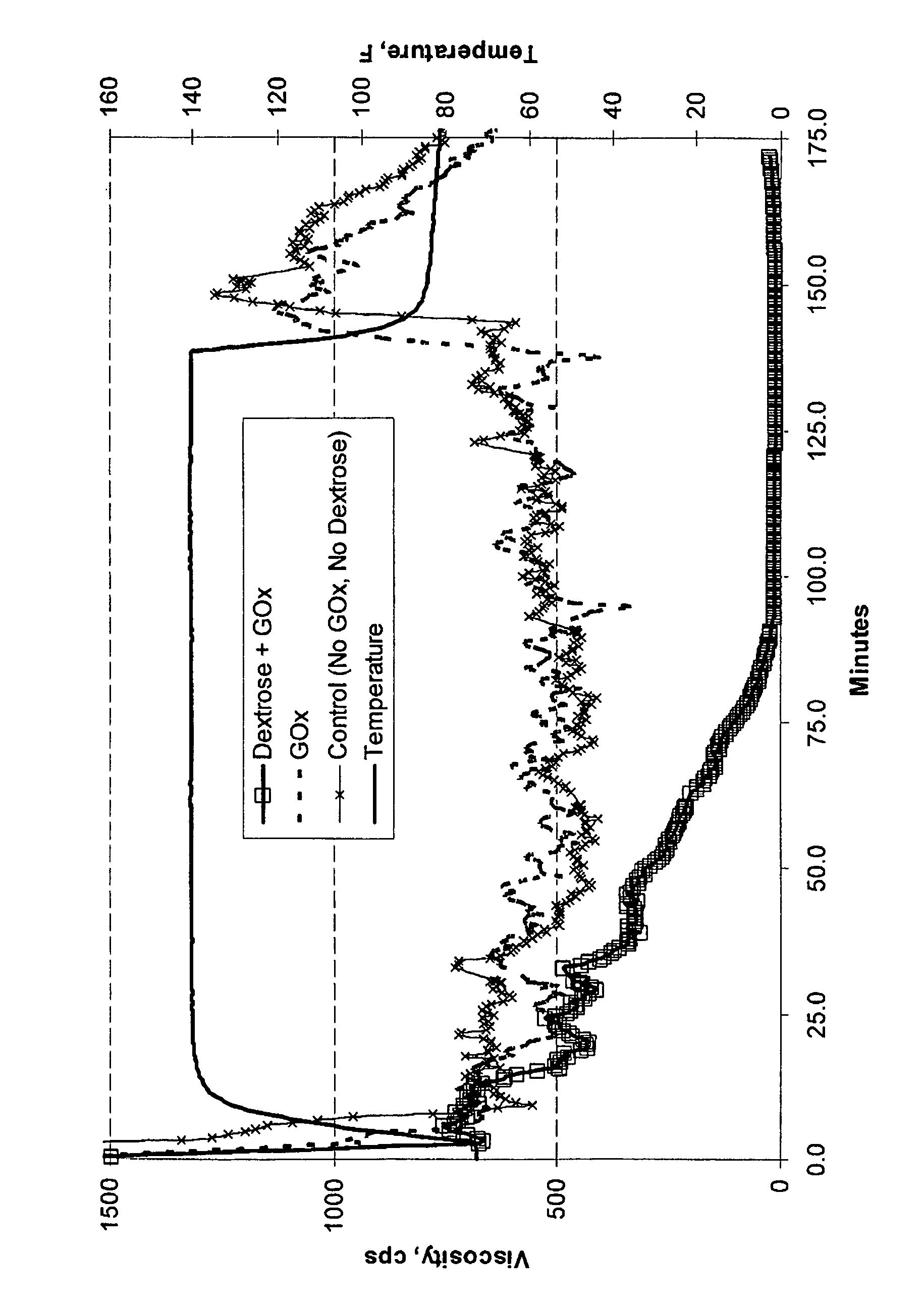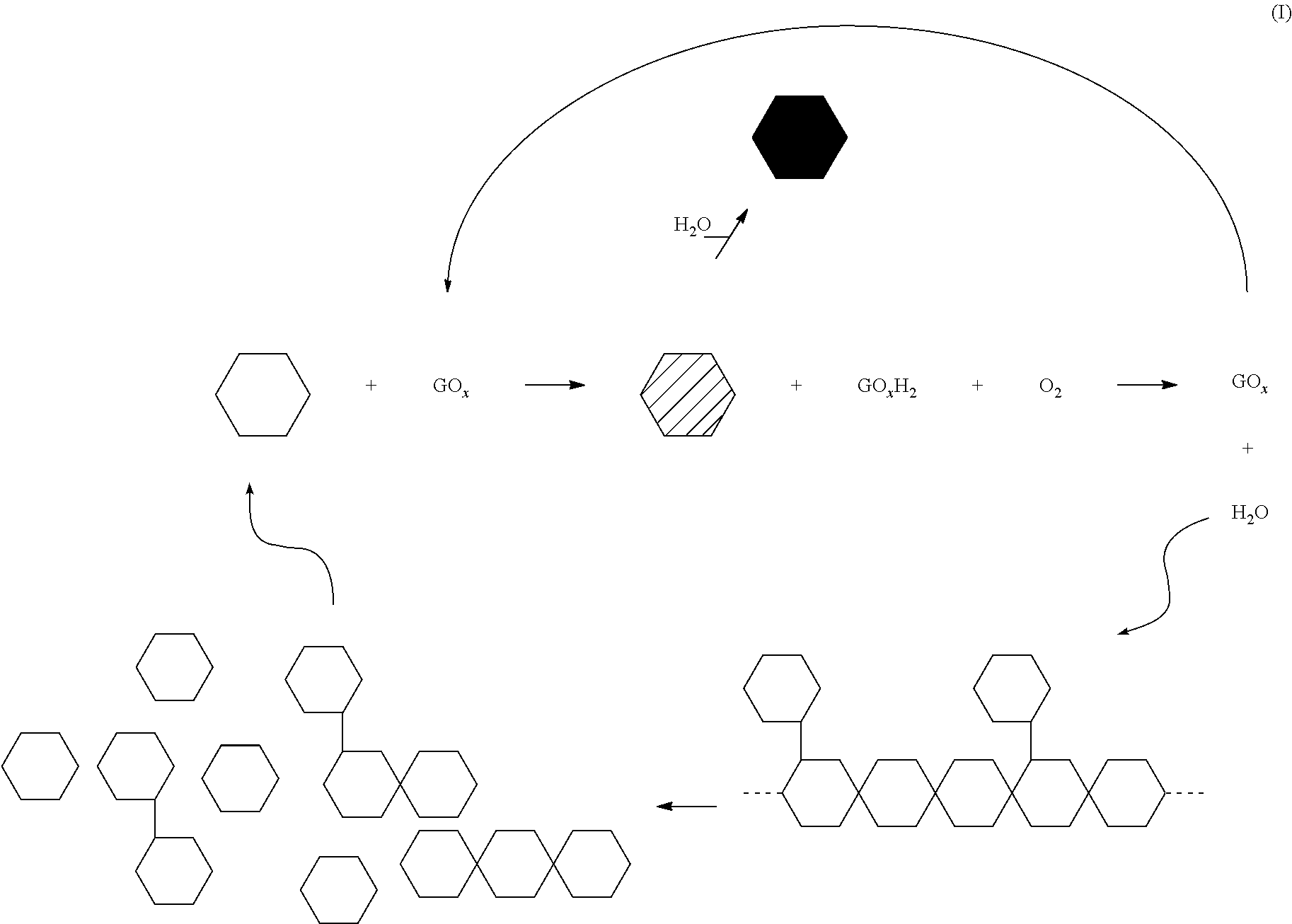Method of using hexose oxidases to create hydrogen peroxide in aqueous well treatment fluids
a technology of hexose oxidase and hydrogen peroxide, which is applied in the direction of fluid removal, borehole/well accessories, survey, etc., can solve the problems of chemical oxidizers generally being too slow to be effective, the formation of fractured fluids, and the inability to react with limited concentrations
- Summary
- Abstract
- Description
- Claims
- Application Information
AI Technical Summary
Benefits of technology
Problems solved by technology
Method used
Image
Examples
examples
[0048]Example 1. A 100 mL aqueous fluid was prepared containing 25 ppt of a non-derivatized guar having an intrinsic viscosity of approximately 16.1 dL / g (commercially available as GW3 from Baker Hughes Incorporated), 1.5 gpt of buffer (commercially available as BF-7L from Baker Hughes Incorporated), 1.5 gpt of a borate crosslinking agent (commercially available as XLW-32 from Baker Hughes Incorporated) and about 25 ug / mL of glucose oxidase, GOx. Dextrose was then added at a concentration of approximately 3 μM. The resulting fluid was then transferred to a Chandler 5500 viscometer having an R1B1 bob and cup assembly. The viscosity was then measured at 300 rpm (511 sec−1) at 140° F. The FIGURE demonstrates the reduction in viscosity of the crosslinked guar polymer by the action of glucose oxidase. As shown in the FIGURE, glucose oxidase reduces the viscosity of the 25 ppt crosslinked guar polymer when seeded with the 3 mM dextrose. Liberated mannose and galactose monosaccharides are ...
example 2
[0049]Approximately 5.5 mM of mannose, galactose and glucose were dissolved in three separate vessels containing distilled water and about 25 ug / mL of glucose oxidase. The concentration of hydrogen peroxide was then measured by test strips after 5 minutes and 1 hour and the pH of the fluid after one hour was also determined. The results are set forth in Table I below:
[0050]
TABLE ISugar[H2O2]A, mg / L[H2O2]B, mg / LpHBMannose3104.5Galactose035.7Glucose10303.7A5 minute reaction time.B1 hour reaction time.
[0051]As shown in Table I, mannose and galactose as well as glucose are suitable substrates for glucose oxidase. Based on the concentration of hydrogen peroxide with respect to time, the enzyme's substrate specificity is glucose>mannose>galactose. This is also reflected in the pH of the samples after the 5 minute reaction time. Referring to Sequence II above, the production of a carboxylic acid from the oxidized lactone provides the recorded drop in the pH of the fluid. The pH of each of ...
PUM
 Login to View More
Login to View More Abstract
Description
Claims
Application Information
 Login to View More
Login to View More - R&D
- Intellectual Property
- Life Sciences
- Materials
- Tech Scout
- Unparalleled Data Quality
- Higher Quality Content
- 60% Fewer Hallucinations
Browse by: Latest US Patents, China's latest patents, Technical Efficacy Thesaurus, Application Domain, Technology Topic, Popular Technical Reports.
© 2025 PatSnap. All rights reserved.Legal|Privacy policy|Modern Slavery Act Transparency Statement|Sitemap|About US| Contact US: help@patsnap.com



